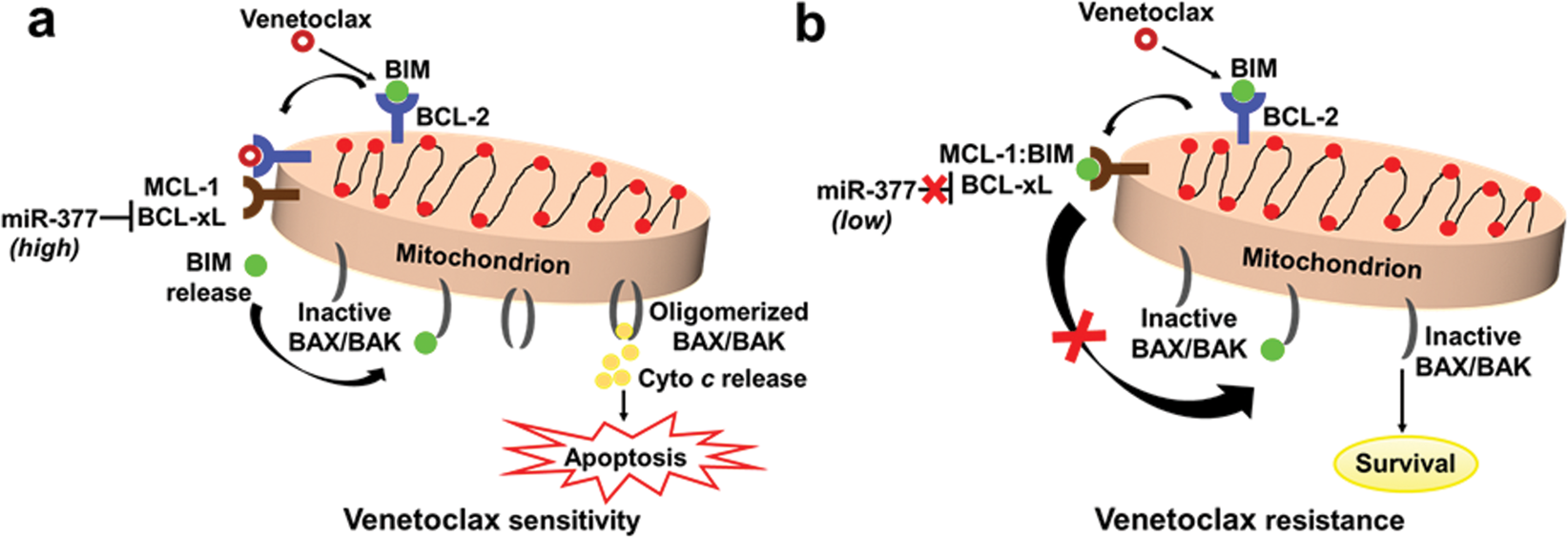Summary
BCL2 is the landmark gene regulating apoptosis. It contributes to tumorigenesis by blocking programmed cell death as such, favoring cell survival. Aberrant expression of the BCL2 gene is strongly associated with resistance to chemotherapy and radiation. This review describes the structure, function, and role of the BCL2 gene in cancer.
DNA/RNA
Description
The human BCL2 gene has a three-exon structure with an untranslated first exon, a 220-bp facultative intron I, and a 370-kb large intron II. The native BCL2 gene has 3 long untranslated regions and two distinct promoters, P1 and P2. The major promoter region, P1, is a TATA-less GC-rich promoter that contains multipletranscriptional start sites and is located 1386-1423 bp upstream of the translation start site. The use of alternative promoters results in mRNAs composed of exons II/III or I/II/III. The t(14;18) translocation in B cells generates heterogeneous 4.2-7.2 kb BCL2-IGH chimeric mRNAs resulting from alternative BCL25 exons and various IGH3 untranslated regions. The t(14,18) does not break the open reading frame of BCL2; however, inappropriately high levels of BCL2-IGH mRNA are present. Native BCL2 and BCL2-IGH fusion mRNAs demonstrate the same short half-life of 2.5 hours (Clearly et al, 1986, Tsujimoto et al1986, Seta et al1988)
Protein
The BCL2 gene encodes a 26 kd protein consisting of 239 amino acids with a single highly hydrophobic domain at its C-terminal end, which allows it to localize mainly in the outer mitochondrial membrane and, to a lesser extent, in the nuclear envelope and the mitochondrial membrane. membrane of the endoplasmicreticulum (Chen-Levy 1989). The main role of the BCL2 protein is to maintain the integrity of the mitochondrial membrane, preventing the release of cytochrome c and its subsequent binding to APAF1 (apoptosis-activating factor-1). The protein contains all four BCL2 homology (BH) domains (BH1 to BH4). BH1, BH2, and BH3 constitute the hydrophobic cleft through which the protein interacts and forms homo- and heterodimers with proapoptotic members of the BCL2 family of proteins (Thomadaki 2006, Reed 2006). BCL2 increases cell survival kinetics specifically by blocking apoptosis. Thus, it prevents the cell from engaging in suicidal activities that generally require ATP, new RNA, and protein synthesis, and induces a variety of cellular ultrastructural changes, such as cell shrinkage, nuclear fragmentation, and DNA degradation.
Expression
BCL2 expression is widespread in immature tissues prenatally, while its expression becomes highly restricted with maturation. BCL2 is widely expressed on immature B cells and memory B cells, but is temporarily downregulated on germinal center B cells, in part due to repression by BCL6. High levels of BCL2 have been detected in the thymus throughout the medulla, in the spleen and in the lymph nodes, as well as in the early stages of the embryonic kidney. A decrease in their expression levels is observed in motor neurons, as well as in pre-B cells preparing to differentiate (Thomadaki 2006).

